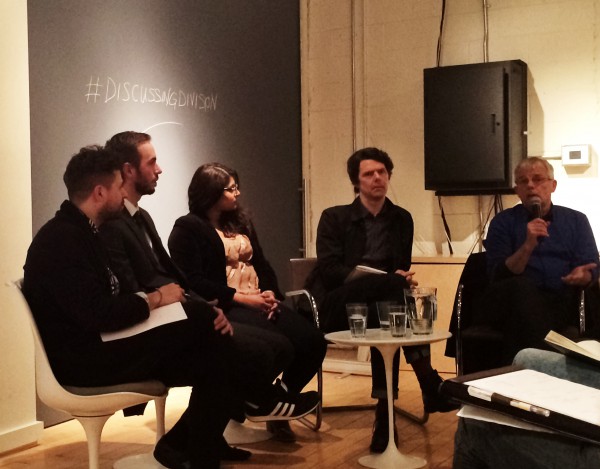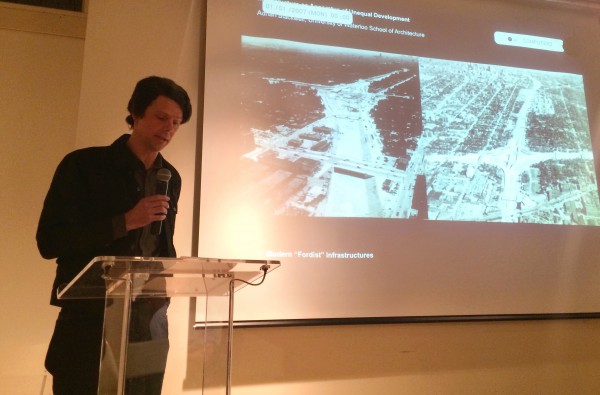Institute without Boundaries panel discusses how urban design can create divisions as well as bring people together

(Left to Right) Christopher Pandolfi, Matthew Browning, Denise Pinto, Adrian Blackwell, and Jon van Nostrand discuss the environment, nature, crumbling infrastructure and driverless cars
Photo: Keren Fan/The Dialog
Connectivity is an important factor, which needs to be thought about by architects and town planners during the design process. More and more building complex, rail transportations helps citizens enjoy more convenience. However, along with the advantages, connectivity may also bring a series of problems.
On March 3, there was a panel called Discussing Division: The Dark Side of Connectivity at George Brown’s school of design organized by The Institute Without Boundaries (IwB) in association with Arup Canada.
Host Christopher Pandolfi invited four guest speakers to deliver brief speeches about the connection between urban design from different angles.
Adrian Blackwell, assistant professor at the University of Waterloo’s school of architecture, introduced the impact of city infrastructure on neighborhoods from a professional standpoint.
The global director of Jane’s Walk, Denise Pinto, recommended walking instead of driving, so that they can share stories about their communities, explore their cities, and connect with neighbourhoods.
“The (Jane’s Walk) tour leaders are changing things, they’re changing the world one walk at a time,” said Pinto.
Matthew Browning, senior transportation consultant for Arup Group, stands for, cities should be designed for everybody. He showed an example from google maps showing that in Orlando there are two houses 20 metres apart but an 11 kilometre drive from each other.

Adrian Blackwell, assistant professor at the University of Waterloo, introduces impact of city infrastructure on neighbourhoods
Photo: Keren Fan/The Dialog
John van Nostrand, the founding principal of planningAlliance, focused on recreating nature and improving greenbelts.
Following the individual, introductory presentations, the panel took questions from the moderator and discussed topics including the environment, nature, crumbling infrastructure and even driverless cars.
“Driverless cars will mean more on the road, which is a problem,” said Blackwell, who was a concerned about the application of surveillance technology in mapping roads and movements required for autonomous automobiles.
“Understanding how this natural border and infrastructure connects people, how to create the disconnect and how to break these gaps is the purpose of this panel,” said Phuong Diep, an IWB student who helped organize the event. “I feel really happy and we got some interesting answers. All of the speakers were fantastic and this is a successful night.”

